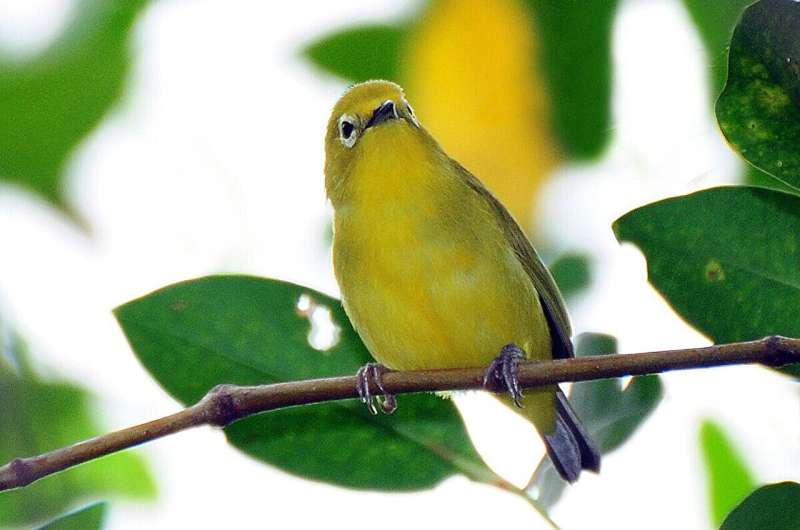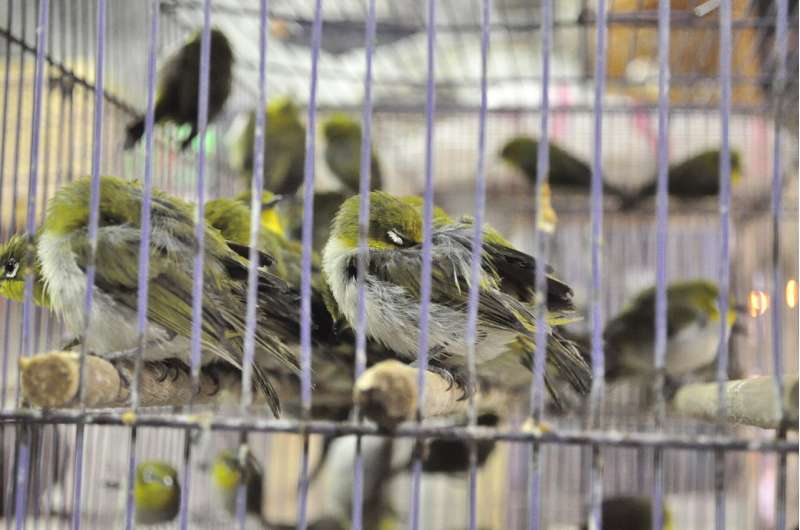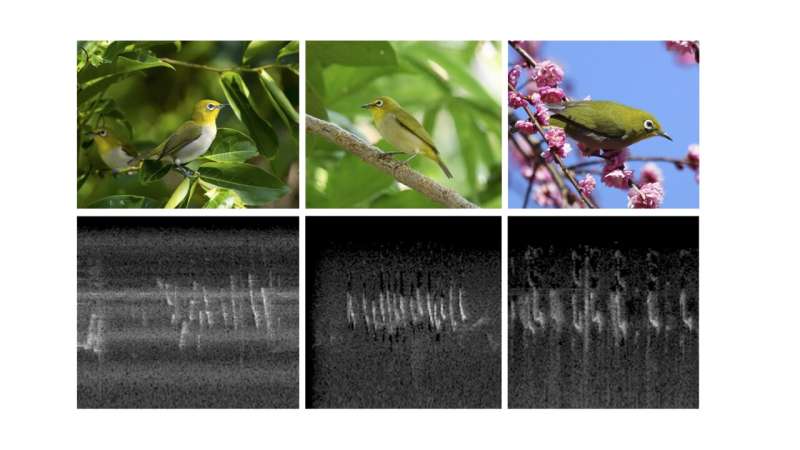July 11, 2024 dialog
This article has been reviewed according to Science X's editorial process and policies. Editors have highlighted the following attributes while ensuring the content's credibility:
fact-checked
trusted source
written by researcher(s)
proofread
How artificial intelligence can help prevent illegal wildlife trade

Imagine you are a law enforcement official at a wildlife market and suspect some of the birds on sale are from endangered or illegally traded populations. This is a situation that demands decisive identification and action, but in cases where "look-alike species" are easily mistaken for each other, simple physical traits like color and size may not be enough to enable proper identification on the spot. Things get even trickier when unscrupulous traders dye birds or otherwise alter their appearance to make them resemble other species that command higher prices.
More than a third of all the world's bird species are harvested for sale in wildlife markets that include more individuals and species of birds than any other taxonomic group, and are valued at tens of billions of dollars annually. Demand for live birds as pets and in cultural practices, such as bird singing contests and prayer animal release, is driving overexploitation, which is a major contributor to population declines. In east and southeast Asia, for example, high demand for captive songbirds is pushing some species to the brink of extinction in the wild.
Renowned for their beauty and songs, white-eyes (Zosteropidae) are popular songbirds in Asian wildlife markets, and include endangered species whose trade is prohibited by CITES.
White-eyes sold in markets include endangered and near-threatened species, such as the Javan white-eye (Zosterops flavus) and Togian white-eye (Zosterops somadikartai), respectively. Protecting their wild populations is a critical part of preventing their extinctions. Identifying such birds is crucial for enforcing wildlife laws and keeping them out of markets.

This is where an innovative artificial intelligence (AI) approach can be a game-changer. Many birds are highly vocal, communicating through a wide range of distinctive songs and calls. We realized that by harnessing recordings of their vocalizations, with their unique bioacoustic signatures, we could develop an AI tool to identify white-eye species from their vocalizations alone.
Public databases of bird sounds include xeno-canto and Cornell's Macaulay Library. We used three major avian vocalization databases to access bioacoustic data for 15 commonly traded, visually similar white-eye species. Using those recordings, we employed deep learning techniques and trained a powerful neural network model to recognize the specific acoustic patterns and sonic signatures of each white-eye species.
This approach is similar to how facial recognition is used to identify individual people, but we used vocal recognition to identify bird species instead. To make the system robust, we incorporated data augmentation methods and even included samples of ambient environmental sounds that might be picked up in market recordings, in order to simulate real-world conditions as closely as possible.
We then employed the Inception v3 pre-trained model to classify the 15 white-eye species and ambient sound (i.e. non-bird sound) using 448 recordings of white-eye vocalizations. We converted recordings into spectrograms and used image augmentation methods to enhance the performance of the AI neural network through training and validation.
Our results, published in Ibis, have been incredibly promising. Our machine learning models can identify focal species from their vocalizations with over 90% accuracy. That's an astounding level of precision for distinguishing between look-alikes based solely on sounds.

But the true power of this technology lies in its potential applications. For example, a user-friendly smartphone app using this system can be developed by anyone—law enforcement officers, customs agents, conservationists, even citizen scientists. This would allow users to simply open the app, let it "listen" to the birds for a few seconds, and identify the species almost instantly, whether it's in a market, a pet shop, or in the field. While we've initially focused on white-eyes, it is adaptable for many vocal species.
This discovery couldn't come at a more crucial time. Real-time data processing and action is invaluable for enforcing wildlife protection laws and clamping down on illegal trafficking. This bioacoustics approach offers an affordable, non-invasive, rapid, and highly accurate method for identifying birds, solving the problem of distinguishing look-alike species.
The recent boom in AI and readily-available cloud computing has opened up vast new computational power for conservation. Automated bioacoustics monitoring is an innovative solution, but also just the tip of the iceberg for AI's potential applications to protecting biodiversity.
While challenges remain, we are optimistic that such technologies can help turn the tide against wildlife trafficking and the decimation of wildlife. Equipping professionals and citizen scientists with accessible AI identification tools can revolutionize how we protect vulnerable wildlife populations.
This story is part of Science X Dialog, where researchers can report findings from their published research articles. Visit this page for information about Science X Dialog and how to participate.
More information: Shan Su et al, A novel deep learning‐based bioacoustic approach for identification of look‐alike white‐eye (Zosterops) species traded in wildlife markets, Ibis (2024). DOI: 10.1111/ibi.13309
Dr. Shan Su is a Research Fellow at the International Bird Conservation Partnership (IBCP); she earned her PhD at University College London and previously conducted postdoctoral research at Oxford University, UK.
Dr. Nico Arcilla is Director of IBCP, whose mission is to foster and support research, outreach, and partnerships to advance the conservation of birds worldwide; she earned her PhD at the University of Georgia and is an Affiliate Fellow at the University of Nebraska, USA.
Dr Tai-Yuan Su is an Associate Professor in Yuan-Ze University, Taiwan. He specializes in medical devices, computer vision, and deep learning; he earned his PhD from National Yang Ming University, Taiwan.




















